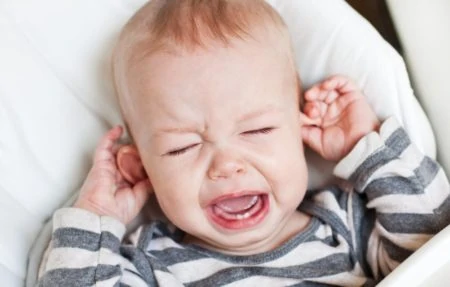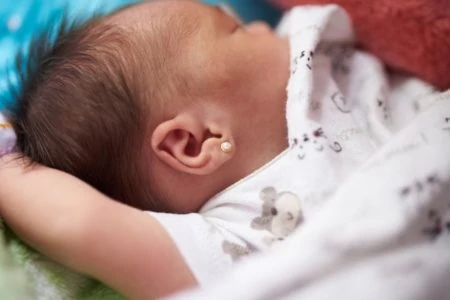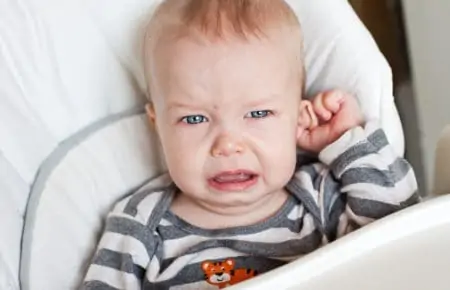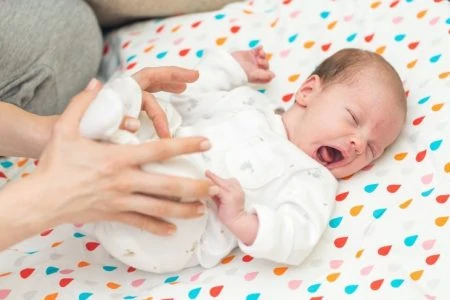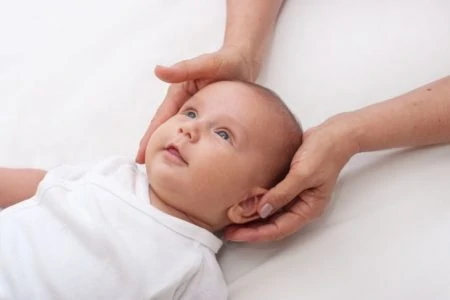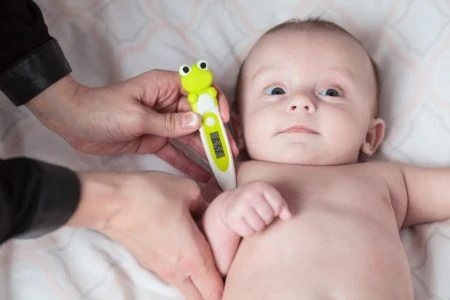Ear infections are a painful rite of passage for many children. If your little one hasn’t experienced one yet, they likely will. In fact, most children will have at least one ear infection by their third birthday.
Seeing your baby in pain is stressful, but you are not helpless. Knowing what to look for and how to respond can make a world of difference in your child’s comfort and recovery.
In this article, we will break down exactly why these infections happen, how to spot the silent signs, and the best ways to treat them so everyone can get back to sleep.
Key Takeaways
- Anatomy plays a role: Children are prone to infections because their eustachian tubes are smaller and more horizontal than adults’.
- Watch the signs: Common symptoms include ear tugging, high fever, fluid drainage, and unusual fussiness.
- Treatment varies: While antibiotics are common, doctors may sometimes recommend a “wait-and-see” approach for older children.
- Prevention is possible: Handwashing, upright bottle feeding, and avoiding smoke exposure can significantly lower risks.
What Is an Ear Infection?
An ear infection, medically known as otitis media, occurs in the middle ear located behind the eardrum. It usually involves inflammation and fluid buildup in the eustachian tubes. This swelling traps fluid, creating a breeding ground for bacteria or viruses.
These infections often follow a common cold, flu, or allergy flare-up. Congestion from these illnesses blocks the tubes, leading to pressure and pain. For a child who cannot speak yet, this pressure can be terrifying and uncomfortable.
There are generally two types of ear issues parents should know:
- Acute Otitis Media (AOM): This is the active infection. It comes on suddenly with pain, fever, and redness (1).
- Otitis Media with Effusion (OME): This happens when fluid remains in the ear after the infection clears. There may be no pain, but it can affect hearing.
Chronic ear infections occur when fluid fails to drain or infections return repeatedly. If your child battles chronic issues, your pediatrician might suggest seeing an ENT specialist.
Why Do Ear Infections Happen?
The primary culprit is anatomy. The eustachian tubes connect the ear to the back of the throat. Their job is to drain fluid and equalize pressure.
In adults, these tubes are slanted, allowing gravity to help drain fluid. In babies and toddlers, the tubes are shorter and more horizontal. This shape makes it difficult for fluid to drain and easy for nasal bacteria to travel to the ear (2).
Blockages happen easily in these tiny tubes. Since young children have developing immune systems, they catch colds frequently. This combination of frequent illness and horizontal tubes creates the perfect storm for infection.
While anatomy is the main factor, several triggers can spark an infection:
- Upper respiratory infections: Colds and flu are the most common causes.
- Allergies: Pollen or dust can cause inflammation and mucus buildup.
- Enlarged adenoids: These glands near the throat can block the eustachian tubes when swollen.
- Secondhand smoke: Exposure to smoke paralyzes the tiny hairs that clear mucus, leading to trapped fluid.
Note About Sinus Infections
Lifestyle factors also play a part. Babies who bottle-feed while lying flat are at higher risk because milk can pool in the throat and enter the eustachian tubes. Pacifier use and attending large daycare centers can also increase exposure to germs (4).
Does Your Baby Have an Ear Infection?
Unless the ear is draining fluid, you cannot diagnose an infection just by looking at the ear. Instead, you have to play detective with your child’s behavior.
If you are unsure whether to call the doctor, look for these common symptoms:
- Fever: Infections often bring fevers over 100.4°F (38°C). If the fever returns after pain medication wears off, the body is likely fighting an active infection.
- Ear pulling or batting: Babies often tug, claw, or rub their ears to relieve pressure. However, note that this can also be a sign of teething or simply exploring their body.
- Sleep regression: Lying flat increases pressure in the head. If your good sleeper suddenly screams the moment you lay them down, it is a strong indicator of ear pain.
- Fluid drainage: Yellow, white, or bloody fluid draining from the ear canal signals a ruptured eardrum. While this sounds scary, it actually relieves the pain, but it requires immediate medical attention.
- Loss of appetite: The motion of sucking and swallowing changes pressure in the ear. This can cause pain, making a hungry baby refuse to eat (5).
- Balance issues: The inner ear controls balance. You might notice a toddler becoming clumsier than usual.
- Unusual irritability: If your baby is inconsolable, clingy, or crying more than usual, pain is likely the cause.
It is important to remember that teething can mimic some of these signs. However, teething usually does not cause high fevers or cold symptoms.
How to Relieve Ear Infection Pain
If your doctor prescribes antibiotics, relief usually starts within 24 to 48 hours. In the meantime, your goal is symptom management.
Here is how you can help your child cope with the pain:
- Medication: Acetaminophen (Tylenol) or Ibuprofen (Motrin/Advil) are the gold standards for reducing fever and pain. Always follow the dosing instructions for your child’s age and weight. Note: Ibuprofen is generally for babies 6 months and older.
- Warm compress: A warm, moist washcloth held against the ear can soothe pain. Ensure it is not too hot to avoid burns.
- Keep them hydrated: Swallowing may hurt, but dehydration makes everything worse. Offer small, frequent sips of breastmilk, formula, or water. Popsicles are great for older toddlers.
- Elevate the head: If your child is old enough for pillows, propping them up can reduce pressure. For babies, hold them upright for naps if possible.
- Extra cuddles: You cannot rush the healing, but holding your child can lower their stress levels and help them tolerate the discomfort.
I commonly recommend acetaminophen or ibuprofen for ear pain relief. Some parents ask me about using warm oil drops (garlic oil or olive oil), but I do not recommend this, especially if there is a potential eardrum perforation. Some doctors prescribed benzocaine ear drops to numb ear pain in the past, but they no longer recommend this (6).
Editor's Note:
Dr. Leah Alexander, MD, FAAPWhen to Call the Doctor Again
If you do not see improvement within 48 to 72 hours of starting antibiotics, call your pediatrician. The bacteria might be resistant to the specific medicine prescribed.
You should also schedule a follow-up visit 4 to 6 weeks after the infection clears. The doctor needs to check that the fluid has drained completely to prevent hearing issues or recurrent infections.
How to Prevent Ear Infections
While you cannot prevent every infection, you can lower the odds. Implementing these habits can keep your child’s ears clear.
- Wash hands frequently: This is the number one way to stop the spread of cold and flu germs that lead to ear infections.
- Avoid secondhand smoke: Make your home and car strict smoke-free zones. Smoke particles cling to clothing and can irritate a baby’s eustachian tubes hours later.
- Breastfeed if possible: Breast milk contains antibodies that help fight off infections. Even breastfeeding for a few months offers protection.
- Bottle feed upright: Never prop a bottle or let a baby take a bottle to bed. Feeding while flat allows liquid to flow back into the ear canals.
- Manage allergies: If your child has chronic congestion, talk to your doctor about allergy management to keep mucus in check.
- Stay up to date on vaccines: The pneumococcal conjugate vaccine (PCV) and the annual flu shot have been shown to significantly reduce the rate of ear infections (7).
Baby Ear Infection FAQs
In Conclusion
Dealing with an ear infection is exhausting for both you and your baby. Between the sleepless nights and the tears, it is easy to feel overwhelmed. Just remember that this is a very common part of childhood, and you are doing a great job.
Trust your instincts. If your child seems “off” or is in pain, a quick trip to the pediatrician can give you peace of mind. With the right treatment and some extra snuggles, your little one will be back to their happy self in no time.
